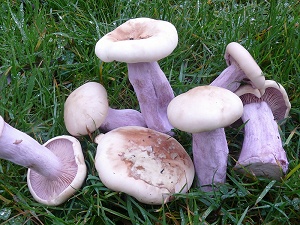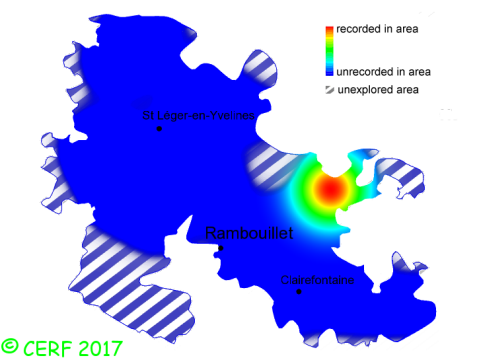| Lepista saeva (Fr.) P.D. Orton |
|
|
|
|
|
|
The cap is pale grey . The cap surface is smooth, not viscid nor sticky. The stem is violet, without ring. The flesh is whitish to flesh pink, unchanging; its taste is mild; the odour is pleasant (resembling the wood blewit) or mealy; its texture is fibrous. The gills are white to flesh pink, emarginate, crowded . The spore print is pale pink. This species is saprophytic. It grows on the ground, on a rather calcareous soil. The fruiting period takes place from July to March.
Chemical tests : none. Distinctive features : distinctive purple stem in the youth; gills easily separated from cap; in parks, meadows Lepista saeva is rare and confined in the forest of Rambouillet, and is occasional, more generally speaking . | ||
|
page updated on 14/01/18

